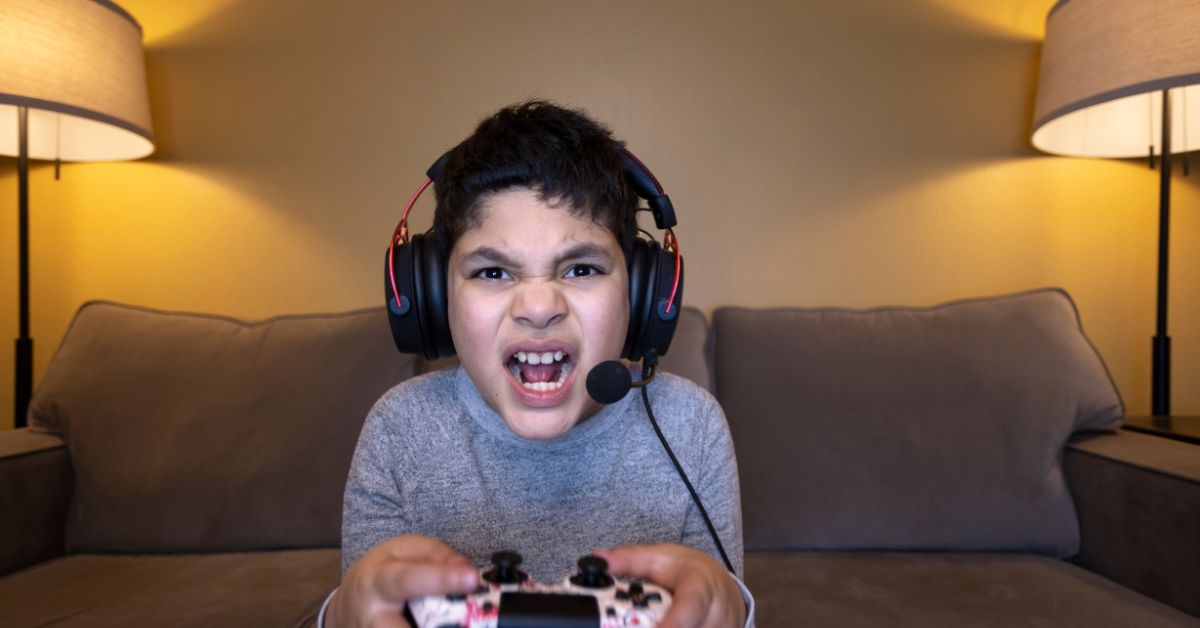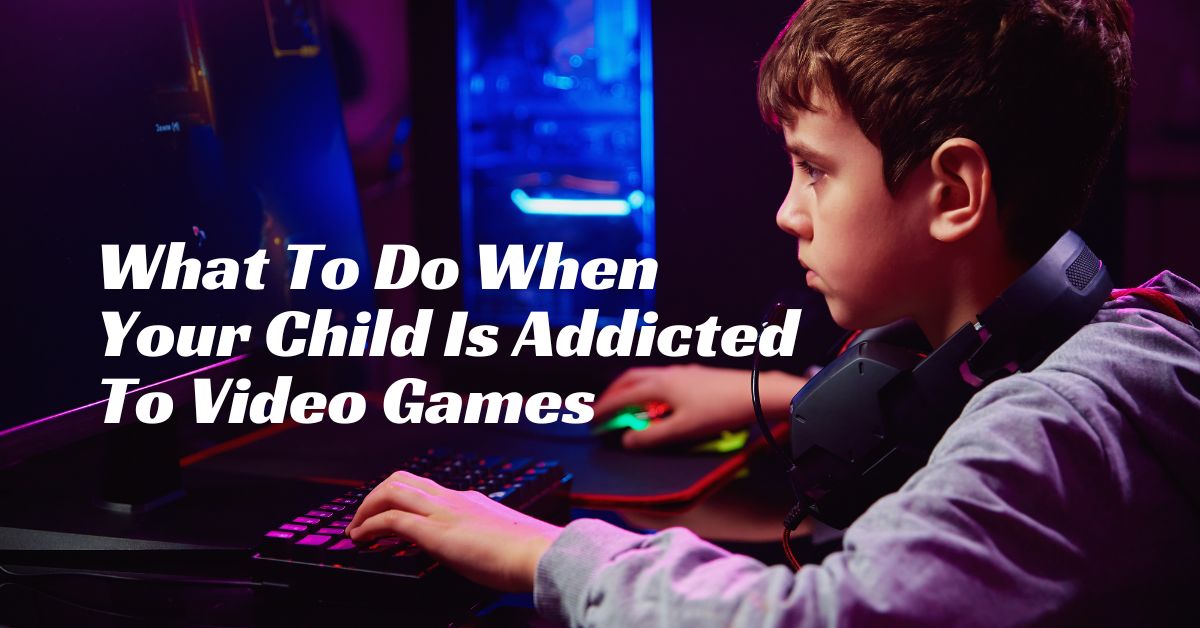Video games have become a daily fixture in many children’s lives. They offer an escape, a challenge, and sometimes even a sense of community. While there’s no denying that gaming can be motivating and, at times, educational, too much of it often leads to conflict, frustration, and missed opportunities for growth in other areas. For homeschool families, the boundaries between recreation and learning blur more easily, making it even more challenging to maintain a healthy balance. Video game addiction in kids is a rising concern, and as a parent, you may feel overwhelmed, helpless, or even guilty when you see your child struggling to put down the controller or step away from the screen.
Yet there is hope. With mindful effort and clear strategies, families can regain control and help kids develop a stronger, more balanced relationship with screens—starting with recognizing the signs, managing time intentionally, and building stronger routines at home. In what follows, you’ll find practical tips drawn from research, family experience, and best practices in homeschooling to address video game addiction in kids, specifically geared toward managing screen time in homeschool and implementing effective homeschool strategies for gaming addiction.
Understanding Video Game Addiction In Kids
It’s tempting to label excessive gaming as “just bad habits” or “a lack of discipline,” but the reality is often more complex. Video game addiction is rarely the result of one issue alone. Children are drawn deeply into games for a variety of emotional, social, and developmental reasons. Some are seeking stress relief or escape from academic or social anxiety; others are motivated by the social nature of online games that allow for teamwork and communication with friends or even strangers around the globe. More still crave a sense of accomplishment—the thrill of leveling up, mastering skills, or unlocking new areas and rewards within their favorite games.
When families choose to homeschool, the lines between fun and study can become especially fuzzy. A child who is struggling with lessons is often already home, surrounded by multiple screens and relatively few adult gatekeepers. With educational software, online classes, games, and digital communication all mingled together, the temptation to slip from schoolwork to gaming is ever present.
For parents, the first step is not to blame themselves or their child. Instead, begin by observing and understanding the specific factors driving the behavior—the triggers, routines, and patterns—so you can address them with clarity and consistency.
Common Signs of Gaming Addiction to Watch For
Early intervention is easier when you know what to watch for. A child showing signs of video game addiction may exhibit some of the following symptoms:
- Consistent preoccupation with games. They think about gaming when doing other things, anticipate the next session, or talk about it nonstop.
- Decline in academic performance. Missed assignments, poor grades, or incomplete homeschooling tasks.
- Withdrawal from family and friends. Choosing gaming over other activities, family time, or previous hobbies.
- Severe mood swings. Experiences anger, anxiety, or frustration when asked to reduce or stop gaming, or shows irritability when not allowed to play.
- Neglecting sleep and physical needs. Staying up late to play, poor sleep habits, neglecting basic hygiene, or eating poorly.
- Loss of interest in former interests. Hobbies and passions outside gaming fade away, including sports, art, or favorite outings.
- Lying or deceit. Hiding game time, sneaking devices, or minimizing the amount of time spent playing.
Not every child will display all these behaviors, but noticing a consistent pattern should be a call to action. Recognizing these early signs lets you take a supportive, proactive approach while the problem is still manageable.

Managing Screen Time In A Homeschooling Routine
When homeschooling, managing screen time is especially challenging. Online tools, digital textbooks, and educational apps are now part of most homeschoolers’ daily routines, making it tricky to distinguish between learning and leisure. Creating healthy habits starts with a structured plan and consistent family rules.
Establish Clear, Non-Negotiable Boundaries
To break negative game habits, you’ll need to implement concrete, predictable boundaries that everyone in the household follows. This lays the groundwork for structure and security, helping your child know what’s expected and why.
- Communicate expectations clearly. Have honest conversations about when and how games can be played, making sure your child knows the difference between school and leisure time.
- Set daily and weekly time limits. Decide on an appropriate daily or weekly total for gaming that balances your child’s age, maturity, and learning needs.
- Gaming comes after responsibilities. Make it clear that all schoolwork and chores must be completed—and checked by you—before any gaming session begins.
- Establish device-free zones. Create clear physical and temporal boundaries, such as keeping devices out of bedrooms at night, off the table during mealtimes, and away during dedicated study hours.
- Make use of parental controls. Many devices and games allow you to set limits on playtime or restrict access to certain apps.
Consistency is essential. If your child sees that you enforce these rules gently but firmly every day, resistance will eventually give way to new habits.
Turn Screen Time into a Reward, Not a Right
Rather than letting games become a default filler for free time, reframe gaming as a privilege that’s earned. This simple shift can have a powerful impact on motivation and accountability.
- Tie screen time to progress. For instance, allow game time after all assignments and chores for the day or week are completed to your satisfaction.
- Celebrate academic achievements. Use a point system, sticker chart, or another visual reminder so your child can “cash in” successes for gaming minutes.
- Be flexible for special circumstances. Unexpected schedule changes, extra-long lessons, or family events may require adjusting rewards occasionally, but be clear about exceptions.
- Involve your child in setting goals. Kids who help set goals and understand the logic behind limits are more likely to cooperate.
Over time, children can learn to manage their own impulses—with your guidance. They may even come to appreciate the structure and the satisfaction that comes from achieving before indulging.
Encourage Balance with Engaging Alternatives
The more fulfilling alternatives your child has, the less likely they are to retreat into gaming. Create routines that make space for creativity, connection, and physical activity.
- Schedule outdoor time as part of the school day. Garden walks, nature scavenger hunts, or exercise routines can be as essential as math or reading.
- Offer creative outlets. Stock your home with art supplies, books, puzzles, and craft projects, and invite your child to choose activities.
- Promote family interaction. Regularly schedule family game nights (non-digital), group meals, or movie nights to connect and have fun.
- Encourage socializing away from screens. Enroll your child in local clubs, sports, or homeschool co-ops, where friendships are based on shared experiences rather than shared screen time.
By making these alternatives enticing and accessible, you’ll reduce the urge to escape into gaming and introduce your child to new passions.
Homeschool Strategies For Gaming Addiction
The freedom and flexibility of homeschooling offer unique opportunities to reset routines, deepen relationships, and manage gaming addiction more intentionally. The lack of a rigid school schedule means you can experiment with what works best for your family and your unique child.
Harness the Power of Real-World Learning (paragraph section)
One of the strengths of homeschooling is the ability to make learning relevant, hands-on, and varied. This can be a tremendous tool in tackling gaming addiction in kids because it gently shifts their focus from screens to tangible experiences. Incorporating regular outings—like trips to botanical gardens, science centers, historic sites, or community service projects—sparks curiosity and breaks the monotony of routine. Practical life skills learning, such as preparing family meals, home repairs, gardening, or budgeting, not only builds lifelong skills but deepens parent-child bonds and instills a sense of accomplishment that many children seek in video games.
As your child grows more comfortable and confident outside the gaming world, they may be less likely to seek constant digital rewards. You can bolster these experiences by encouraging hobbies that foster focus and creativity—woodworking, painting, baking, music, or even mechanical tinkering. The more your child experiences success, joy, and engagement in the real world, the less power video games will have over their attention and behavior.
Designate and Organize Learning Spaces
Where your child works and plays matters more than you might think. In homes where space and screens are shared, it’s all too easy for learning to be interrupted by distractions and temptations. Creating a designated study area can help delineate expectations and separate work time from playtime in your home.
- Dedicate a specific area in your home for studies. Keep it stocked with school supplies and free of the gaming consoles or tablets used for play.
- Personalize the study zone. Ham it up with posters, plants, or other items that make the area inviting—but avoid entertainment cues.
- Keep school materials organized and visible. Binders, checklists, and wall calendars help children visualize the day’s goals and responsibilities.
- Use physical cues to transition in and out. For younger kids, a bell or timer signals when it’s time to switch from school to break, making boundaries tangible.
The more consistent you are with this separation, the easier it is for your child to understand when they’re expected to learn and when they’re free to relax and play.
Practice Open, Supportive Communication
Perhaps the most powerful tool in managing video game addiction in kids at home is your connection with your child. Compassionate, ongoing communication allows you to understand their needs, set boundaries together, and build the trust necessary to make changes stick.
- Check in daily about how your child is feeling. Ask about their favorite parts of the day, what’s stressful, and what they’re looking forward to.
- Talk openly about the reasons for rules. Help your child understand that boundaries aren’t about punishment, but about creating time for all the activities needed for healthy growth.
- Involve your child in problem-solving. If certain limits or routines aren’t working, brainstorm together for alternatives that still honor the goal.
- Praise effort, not just outcomes. Recognize even small steps towards better balance, such as taking a break when asked or completing work before playing games.
- Be patient and persistent. Change takes repetition and time. Recognize that setbacks will happen, but stay the course.
When children feel understood and supported in this process, they’re more likely to internalize new habits, not just comply out of fear of consequences.
Long-Term Strategies For Building A Healthy Relationship With Gaming
Even after immediate behaviors improve, it’s wise to keep fostering a holistic, healthy relationship with technology for the long haul. The goal isn’t to eliminate video games altogether, but to teach moderation and ensure your child is thriving both online and offline.
Support Interests Beyond the Screen (paragraph section)
Children often gravitate toward games because they lack other enjoyable options, or because gaming offers social rewards they may not experience elsewhere. Encouraging a wide variety of offline interests can help. Explore creative clubs, sports teams, crafting circles, science workshops, or outdoor education programs—whatever might resonate with your child’s personality and natural talents. Spend time together researching local opportunities, and let your child have a voice in what they’d like to try.
Some kids discover a love for music, animal care, writing, or athletics simply because a parent provided an opportunity. Others thrive in more solitary hobbies like building models, writing stories, or collecting objects that have personal meaning. The important thing is to fill your child’s schedule, and their heart, with meaningful pursuits that make gaming just one part of a diverse, full life. As your child grows and matures, these experiences will serve as building blocks for resilience, self-esteem, and lasting happiness.
Educate and Empower Your Child About Healthy Technology Use
Instead of only limiting gaming, help your child understand what healthy media use looks like and why it matters. You want them to develop their own sense of moderation and responsibility.
- Discuss the potential downsides of excessive gaming. These include unhealthy sleep habits, declining grades, increased irritability, and fewer opportunities for real-world connections.
- Emphasize the importance of balance. Help your child create daily or weekly schedules that prioritize school, chores, socializing, outdoor time, and creative pursuits, reserving gaming for designated periods.
- Teach self-regulation techniques. For example, encourage your child to set their own timers, take regular breaks, or recognize when they are hungry, tired, or overstimulated.
- Foster digital literacy. Explain how games are designed to be addictive and how to spot manipulative tactics like endless levels or loot boxes.
- Model moderation yourself. Limit phone or computer use during family times, demonstrate purposeful device use, and make an effort to engage together in non-screen activities.
Children who understand the reasoning behind household rules—and see these modeled by adults—are more likely to adopt them willingly.
Stay Engaged and Adapt as Your Child Grows
As your child moves through different developmental stages, their needs and interests will change, as will their relationship with gaming. Regularly revisit your routines and expectations, being willing to adjust as necessary. What works for a 10-year-old may not be appropriate for a teen. Stay connected, stay informed about the latest gaming trends, and continue to prioritize open communication. Your partnership with your child is the most effective tool you have in helping them achieve balance.
Tackling video game addiction in kids, especially in a homeschool setting, calls for a blend of structure, empathy, and creativity. By enforcing consistent routines, offering enticing alternatives, and focusing on communication and real-world engagement, you equip your child with the tools to manage their own tech use, now and in the future. Over time, you’re likely to see improved attitudes, increased motivation, and a renewed interest in life off-screen. The path isn’t always straightforward, and there will be setbacks, but each step you take brings your family closer to a balanced, joyful homeschool experience—both inside and outside the digital world.





